
A world where we work, learn, play, relax, and eat with robots every day
How Will Robotics Change Offices in 2030/2040?
Change in Demand for Offices And Seriously Understaffed Building Maintenance Industry
Demands for offices are currently firm, but with the spread of remote working due to the progress of communication technology and the promotion of workstyle reforms (Figure 1), the office space required per employee is expected to decrease in the future.
Efforts of companies with 301 or more employees to shift to remote work
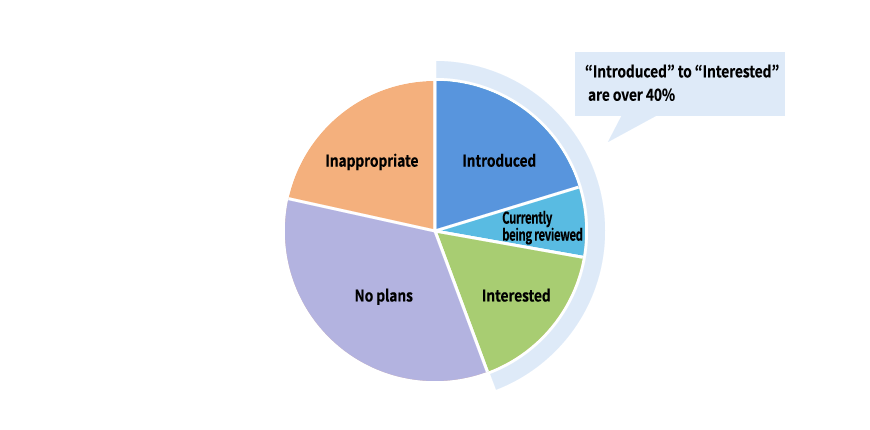
Source: Created by Mitsubishi Research Institute based on White Paper 2017: Information and Communications in Japan published by the Ministry of Internal Affairs and Communications
While demand is expected to decline, new large-scale buildings continue to be built, mainly in the city center, and competition in the office market is expected to intensify moving forward. Consequently, high-value office spaces with safety and environmental functions are sought, and cutting-edge maintenance technologies are required.
Against this backdrop, the building maintenance industry is characterized by a strong pressure to control maintenance costs. For example, in the building cleaning industry, wages are suppressed even though specific skills are required, which makes it difficult to maintain worker motivation. Even in the building security business which is enjoying increased demand due to the coming Olympic Games, the current situation makes it difficult to secure human resources for reasons that include a difficult working environment for women. Labor shortages are thus a serious problem in the building maintenance industry (Figure 2).
Effective ratio of job openings for building maintenance work
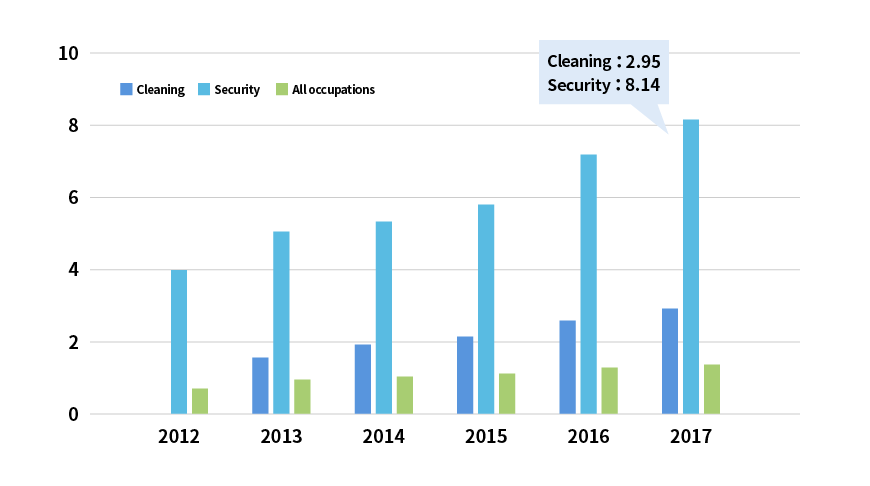
Source: Created by Mitsubishi Research Institute based on 1st Meeting of Particular Skills in Building Cleaning Council, Doc 5. Description of Building Cleaning Industry (2019) published by the Ministry of Health, Labour and Welfare; and THE STATUS OF NEW JOB OPENINGS FORGENERAL EMPLOYMENT BY KEY INDUSTRY AND BY SIZE [actual number] (regular workers (incl. part-timers)) (for September 2018) published by the Ministry of Health, Labour and Welfare
With initiatives that include time-staggered commuting campaigns, satellite offices, hot desking, and offices with recreation areas, diversified work styles are increasingly accepted. But on the other hand, there are concerns that such working styles do not provide uniform and long-term face-to-face communication between employees.
As demands change, the requirements for offices in the future are lowering maintenance costs and providing new value. Let's see how the introduction of robots will change offices in the future.
Current Status of Robot Introduction in Offices
In the current building maintenance industry, robots are increasingly introduced, though on a limited basis, in cleaning, security, and reception, with active development and promotion.
| Cleaning: | In addition to large floor cleaning robots, relatively small vacuuming robots are available on the market. |
|---|---|
| Security: |
Models which provide information when not used for security are available on the market. Many models are currently undergoing verification tests. These robots apply sensor technology to ensure safety and mapping technology for efficient patrolling. |
| Reception: | Various types are available. Conversation and response performance may not be perfect, but these robots are valued for their topicality. They apply face and voice recognition and conversation technologies. |
| Others: | There are many communication support robots in the concept and development stage. |
Office robot example
Cleaning
Panasonic RULO Pro
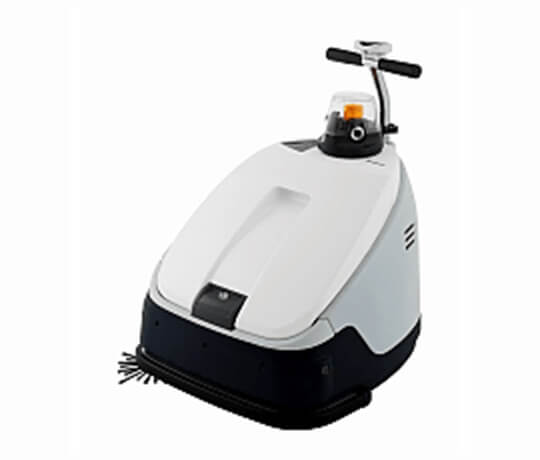
- Can be roughly classified into vacuum type for carpets etc. and scrubbing type for wooden flooring
- Small vacuum types are mainly used in Japan
- Applies automatic driving technology based on surrounding 3D recognition and mapping technology
- Collision avoidance safety technology is outstanding
Source: Panasonic MC-GRS1M (RULO Pro) RULO Pro commercial-grade robotic vacuum cleaner
https://panasonic.biz/appliance/VacuumCleaner/soji_mc-grs1m.html (Accessed:January 28, 2020)
Security
SEQSENSE SQ-2
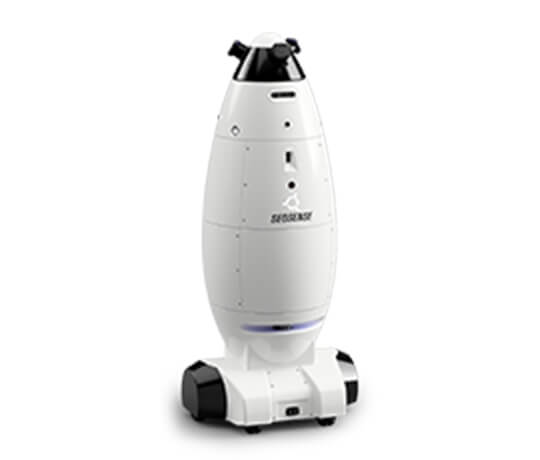
- Abnormality detection using various sensors and artificial intelligence
- Relatively large for demonstration and handling
- Applies automatic driving technology based on surrounding 3D recognition and mapping technology
- Collision avoidance safety technology is outstanding
Source: SEQSENSE autonomous mobile security robot SQ-2
https://www.seqsense.com/product/ (Accessed:January 28, 2020)
Reception
Unirobot unibo
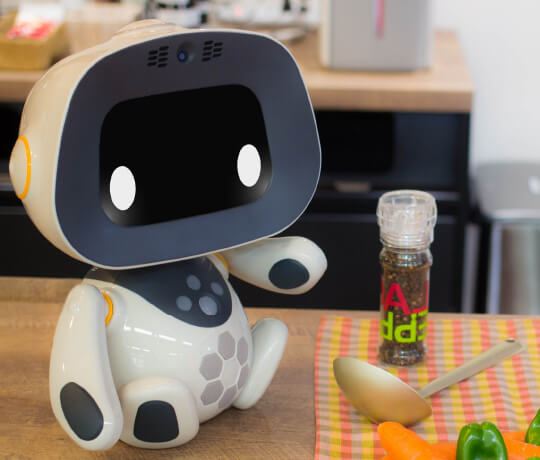
- Fixed, small
- Face recognition, voice recognition function
- Reception guidance chat bot + speech function
- Apps can be added to support various tasks
- Cute round shape with moving limbs
Source: Unirobot Corporation Introduction to unibo reception disk function
https://www.unirobot.com/wp/wp-content/uploads/2018/08/for_reception_service.pdf (Accessed:January 28, 2020)
Introduction of Robots in Office Services Will Become Common Around 2030
Around 2030, labor shortages will become ever more serious in the building maintenance industry, and joint human-robot collaboration is expected to spread in office service businesses, mainly in cleaning, security, and reception.
Joint work between humans and robots in office services in 2030
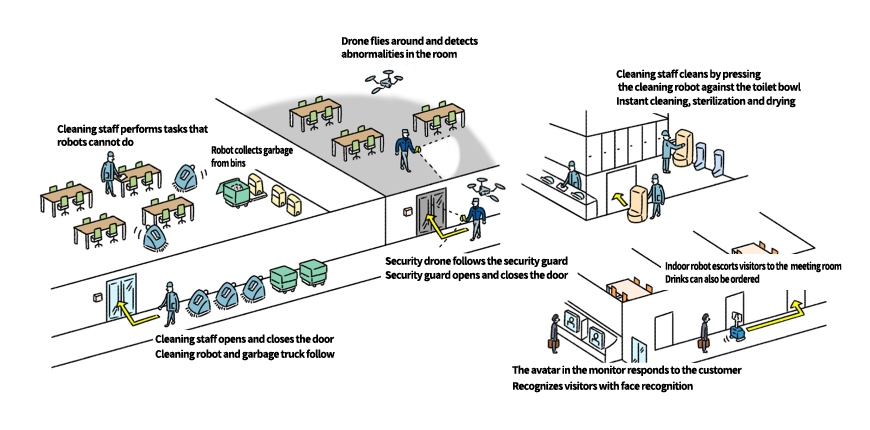
Source: Mitsubishi Research Institute, Inc.
The biggest challenge in increasing the use of robots in offices is maintaining a balance between cost and performance. Elemental technologies such as sensors and controls, indispensable for the performance and functionality of robots, will improve with the technological development of other industrial fields such as self-driving vehicles, which may decrease introduction costs. However, in the early stages of robot introduction, cost balance cannot be achieved by only focusing on high performance. For example, if a robot is equipped with all available functions ranging from sensing and judgment to motion control in a purely design-oriented manner, cost obstacles cannot be overcome and the use of robots will not spread.
To realize high-performance robot systems at low costs, comprehensive designs with optimized total costs will be required. This can be achieved by, for example, linking robots with the sensing functions in buildings’ IoT infrastructures; performing image processing on the cloud by separating these from housing functions; or having humans assist robots in areas where robots are ill-suited.
Reception robots do not need to respond perfectly to all visitors. In non-regular situations that exceed designed specifications, workflows can be made efficient by incorporating robots that can smoothly hand over work to human staff. In the same vein, one cleaning robot does not have to handle all cleaning tasks for one building. Work should be divided for efficiency. For example, people open and close doors and wipe shelves that the robotic floor polisher cannot clean. In this way, a small human staff and a robot with limited functions complement each other, thereby making it possible to optimize total costs. Through optimization, the building maintenance business model is expected to change to one where the general contractor, security company, and electrical equipment manufacturer jointly carry out total building management.
In the transition to robotization, human-robot cooperation is required. It may be possible to accelerate the introduction of robots by becoming a society that works with robots and gradually views them as one of many diverse social participants, similar to the elderly and foreigners. For example, by building a barrier-free environment for robots where floor obstacles are removed for cleaning robots or by giving linguistic consideration to voice recognition reception robots by talking clearly and simply, robots will become popular and people will be able to work comfortably.
Robots Will Support Employees’ Efforts for High Performance By Around 2040
In a society where remote work will have become common, the office space will be merely be a place for high-value-added business activities that can only be achieved through face-to-face communication between team members. The value of the office will depend on how it can provide an environment that enhances members’ synergies.
Office with high added value in 2040
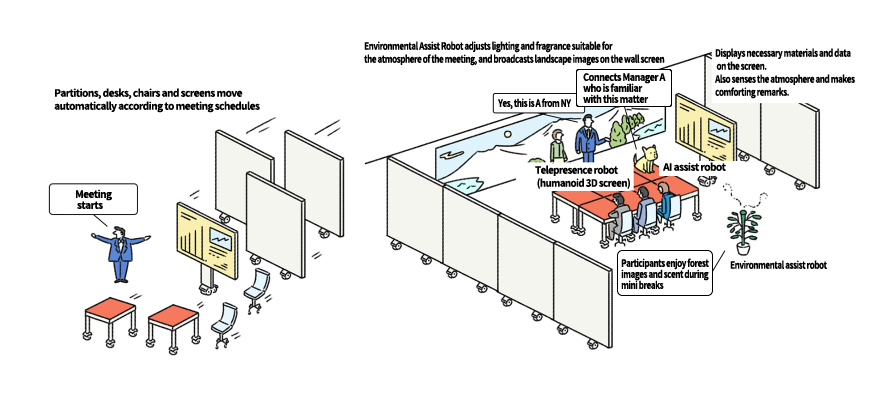
Source: Mitsubishi Research Institute, Inc.
In the office of the future, AI-assisted robots that guide high-quality communication and environment-assisted robots that enhance human ability through the five senses will become in ensuring maximum interaction by staying in the same room in a short time. These robots may be equipped with functions that streamline workflows such as AI assistants analyzing human discussions and presenting relevant information in real time, as well as functions such as summarization and supplementary speech when detecting slow communication from spoken words and voices. Linking robots with the office environment, such as lighting and air conditioning, may be useful in controlling the tone of communication.
One challenge with the spread of office work support robots is the difficulty in measuring the effects of introducing robots. Compared with the reduction of cleaning costs due to the introduction of robots, it is difficult to evaluate the effects of robots in establishing smooth communication between employees. For this, it is necessary to link robots with the organization management function system to objectively evaluate the performance, activity, and work environment of the organization.
In the future, cultural influences such as changes in workplace communication will also appear. Support from AI assistants will enable smooth and efficient dialogue, which will facilitate content-centered discussions regardless of employees’ positions. People can also learn communication skills through interaction with robots. This does not mean that human interaction ability will deteriorate; instead, it will develop as a new form of communication wherever robots are used.
